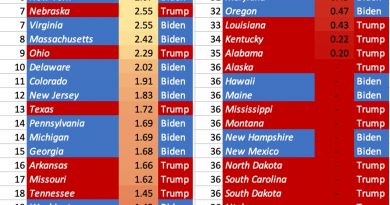SCOTUS Uses 14th Amendment To Kill Affirmative Action. What’s Next?
MANY MOONS AGO, I remember having a conversation with someone in higher education about the challenges of affirmative action. There was clear value in creating diversity within the student body, she said, but the question was always how to achieve that diversity. The problem with affirmative action, she said, was that there was more of an emphasis on box-checking rather than understanding the systemic issues that created the rationale for affirmative action in the first place. There’s not a single answer to this question. After the recent SCOTUS decision, there is one fewer answer. But, thankfully, there are still other ideas– that might actually end up being better answers than what we have now.

SCOTUS Vs. Progress?
We’ll get the obnoxiousness out of the way and point out the irony of the Supreme Court using the 14th Amendment to justify undermining a program that is ostensibly aimed at helping Black people achieve equality or parity in education. The Reverend Dr. William Barber said that the decision “violates the moral vision of not just the Bible but also the U.S. Constitution.” Elie Mystal in The Nation was similarly scathing in its recent coverage:
[Chief Justice John Roberts] ruled that affirmative action violates the Equal Protection Clause of the 14th Amendment. The 14th Amendment was, of course, written explicitly to revoke the racism practiced by whites against Blacks through their slaver’s Constitution, but Roberts doesn’t care about all that. His opinion attempts to capture the 14th Amendment and redeploy it to justify a white version of “color blindness” that just so happens to lock in a status quo that benefits whites.
Mystal’s points are sound, and his interpretation of a white America that aggressively uses whatever means necessary to reinforce its own power seems pretty spot-on to me. But one thing he’s not considering in the article is the notion that this might end up being a good thing in the long term because of what the affirmative action case leaves out. He notes that “the Supreme Court did not ban gender consciousness in college admissions. Nor did it ban legacy consciousness, wealth consciousness, geographic consciousness, or athletic consciousness.” We’ll return to this shortly.
Race-Blind Admissions, Vs. Everything-Else Blind Admissions
Pretty much everyone other than These Tucker Carlson Types (e.g. my in-laws) recognizes that demographic diversity generates more value than homogeneity. This has been studied over massive sample sizes in the Fortune 500, in student satisfaction surveys, and in nonprofit and public sector workplaces. It’s also been proven that while narrow consideration of “merit” in things like aptitude tests might actually be a good predictor of a narrow interpretation of individual performance in schools or jobs, good individual performance doesn’t necessarily translate to a more successful team per se. In other words, companies and universities should be working to attract talent, but diverse talent, rather than simply talent or diversity alone.
The challenge, then, is determining how to achieve that diversity in a way that is legal, equitable, and doesn’t run afoul of the 14th Amendment (again, ironic). Reliance on a single metric– like “quality of education” or “skin color”- is simply inadequate. Colleges or companies recruiting students or talent need to think about a diversity of qualifiers in order to get a diversity of humans. Of course, this will still piss off the conservatives, but what else is new? For example, the sniveling battle cry that “everything should be determined based on merit and no other criterion!” is at odds with the fact that legacy and money still dominate the admissions process in higher education. That obviously doesn’t reflect merit.
Republican Senators are even calling to end legacy admissions, something that has already been called “affirmative action for the rich,” in the wake of the SCOTUS decision And the idea of solely using high school GPA or standardized test scores will certainly crowd out some types of achievements in favor of a narrower range of qualifiers.
Diversity: Achieving Equity Instead Of Just Box-Checking
If diversity is valuable, we should want to promote it. But affirmative action, as it’s often setup, rewards box-checking rather than a commitment to systemic change or what I might call “real” diversity. If the objective of affirmative action is to achieve racial equity in the United States, are we achieving that goal when we have a graduating class that is racially diverse, but socioeconomically homogenous? If, say, Harvard accepts 2000 students and 200 of them are Black, does it matter if 190 of the 200 Black students are Ivy League legacies? Does it matter if they’re second generation immigrants from West Africa rather than directly descended from American slaves? Now, what if, on top of that, all of those Black students admitted are able to pay full tuition?
I’m coming up with this hypothetical (admittedly extreme) scenario because I think that if the figures were exactly those, we might not be achieving anywhere near a systemic goal that is based on rectifying the atrocities of slavery and the legacies of racial capitalism in the United States. I’ve thought about this a lot, too, as I’ve watched many a hiring manager settle on a candidate who happens to look like the people in the community the position is serving based on skin color, even if the candidate has far less in common with that community (by way of Fortune 100 professional background or Ivy League credentials, etc.) than probably plenty of local applicants. The obsession with credentialism and gatekeeping collides headlong with the need to check the box as having a “diverse” applicant.
Clearly, this is not what Harvard’s numbers might actually look like, but it’s the peril of using race and race alone as a criterion. The “race alone” qualifier seems to rationalize companies making lazy decisions about recruitment– that don’t include important factors like socioeconomics.
How to make sure, then, that assessment criteria are, in fact, equitable? This is a question that continues to dog researchers.
Academic Critiques
I’m hardly the first person to ask these questions. Indeed, affirmative action has had plenty of critics on both sides of the racial justice debate since the practice was first conceived more than half a century ago. In Place, Not Race: A New Vision of Opportunity in America, Sheryll Cashin, a Harvard-educated law professor and progeny of a dynasty of progressive civil rights leaders in Alabama, argues in favor of a place-based approach instead. Her book points out that a lot of schools don’t use race in admissions to begin with because of the political opposition to it, and that the objectives of affirmative action are undermined by the lack of context (re: my point about box-checking) as far as serving the objective of the practice. Cashin’s argument has critics, of course, perhaps the most interesting being that a place-based approach struggles to leave room for questions of intersectionality, geographic and socioeconomic mobility, and other factors, but it’s probably the best commentary I’ve seen.
Richard Sander and Stuart Taylor Jr., in comparison, argue in another book that affirmative action undermines its own goals by potentially mismatching Black students to schools at which they may be less likely to succeed academically or socially. Sander and Taylor’s book, especially around the “mismatch theory” idea, was the subject of a great deal of controversy, but we can try and derive value from its idea that affirmative action might, for whatever reasons, struggle to achieve its goals.
Cashin’s points resonated with me as I had worked on a similar challenge in the utility world.

An Example From Energy World
When I worked for Exelon, I developed plans for a multi-million dollar pilot program to retrofit affordable housing in the District of Columbia as part of the city’s new energy efficiency utility plans. One of the first questions that came up in meetings was how we were going to determine that people were qualified as members of the low to moderate income (LMI) market segment. In this case, race alone would not be an acceptable qualifier if a community included, say, white, Black, and Latino people in an LMI area. But equity was a key concern.
We provided a few options, and noted that the second and third could be combined. [1] If we used tax documentation-based income verification, it would be enormously labor-intensive for whoever was administering the program. It would be accurate, but it would be onerous for the participants as well as for the program manager. It would also be especially tough for anyone who had inconsistent income– for example, someone who made $10,000 one month and then was unemployed for two or three months. [2] If we used census tracts as a proxy, on the other hand, it would require very little in terms of administrative effort, because census tracts are easily understood and easily tied to income levels. The problem here is that it could cut out LMI residents living in higher-income census tracts. [3] A third option, especially used to combine with #2 by addressing that gap, would be to use the census tracts as a proxy, but then add another layer in that people could also be qualified if they provided proof of being enrolled in public assistance programs of whatever variety.
A bit surprisingly to me, DC’s regulatory liaisons voiced concerns about whether wealthy people in LMI census tracts would avail themselves of programs not specifically meant for them. This is certainly possible, but it can also be controlled by using explicit language in the application process that requires people to attest to being at or below a certain income level. Even if these questions aren’t legally binding, this kind of thing– as a matter of basic behavioral design- usually stops people from lying just to get a couple hundred bucks in free stuff from their local public utility company. This setup also allowed us to consider how to equitably serve customers in a way that advanced energy efficiency but also reduced energy burden in our most vulnerable populations.
(Sorry to my former great-grand-boss, Senior Director of Customer Dreams Nate Gillespie, who used to just hate it when I’d write about how excited I was about my job on social media!)
Conclusion: All Is Not Lost
I’m mentioning the Exelon example because it highlights how using one single metric or parameter to make a decision in the pursuit of something as complex as the question of racial justice is going to fall short most of the time. It is not everyone’s job to ask seventeen different questions about racial and economic justice every time they make any decision, of course. But it is the job of people who design and manage systems that have major influence over those questions, to make sure that it’s easier to effect more equitable outcomes. This is hard work and it’s complicated, but I truly believe that plenty of people in these institutions are interested in this.
There’s a degree to which it doesn’t actually matter that SCOTUS struck down affirmative action, thoroughly troubling though the court’s recent hard-right turn has been. It’s also a separate issue that the court continues to undermine equality on other issues, such as this idiotic web design case in which it turns out that some of the communication used as foundation for the case itself may have been completely fabricated to begin with. We should be focusing on more on these cases, in which SCOTUS is legalizing discrimination, and, in cases like affirmative action, should be focusing on how to develop a better alternative, accounting for the holes and criticisms of the practice.
A truly just approach to recruitment will emphasize the need for systemic change that transcends the reductive practice of box-checking or quota-filling. Geography as proxy is a good start because of how closely tied it is to race– and legacies of racialized poverty. Another vital element? Developing admissions and recruitment policies that do take a holistic viewpoint, considering multiple factors, prioritizing racial and economic justice without affirmative action, and removing criteria that reinforce wealth and power disparities (usually along racial lines), like legacy admission. SCOTUS isn’t going going to stop on its right-wing culture crusade, but it’s up to us to stay focused on the objectives, rather than simply the practice.




